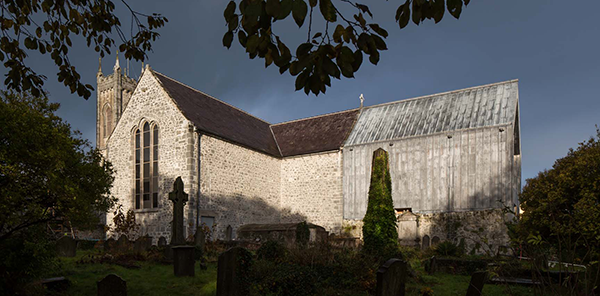Medieval Mile Museum
Published in Issue 3 (May/June 2017), News, Volume 25Kilkenny’s newest attraction opened its doors to the public on 28 February 2017.
By Evelyn Graham
The Medieval Mile Museum, which has been developed by Kilkenny County Council with substantial grant-aid from Fáilte Ireland, is a major new cultural centre in the heart of Ireland’s Medieval Mile under the management of the Kilkenny Civic Trust. It had been an objective of the local authority for many years to see the restoration, conservation and re-presentation of this unique site, which is central to Kilkenny’s history. Following significant engagement between the Church of Ireland community, as former owners of the complex, and Kilkenny Borough Council (the then civic authority in Kilkenny City), the St Mary’s Church and Graveyard Conservation Plan was published by the Heritage Council in 2005. The plan set out the framework within which St Mary’s Church and graveyard were to be conserved into the future, and it is with a great sense of satisfaction that this vision has now been realised.
The church and graveyard were purchased in 2009 by the local authority, and design work commenced in March 2012. The design team commissioned by the council was led by McCullough Mulvin Architects, Dublin. St Mary’s Church has been skilfully converted and extended into a modern museum and exhibition centre, combining sensitive restoration and contemporary design to an exemplary standard. The Medieval Mile Museum serves a number of functions: to act as a visitor hub on Ireland’s Medieval Mile; to showcase the history of Kilkenny City and display its civic treasures; to house an exhibition on the Ossory high crosses; and to offer space for temporary exhibitions and cultural events. The thirteenth-century cruciform church and graveyard with their unique collection of medieval and Renaissance-style tombs provide the ideal setting for the culturally curious visitor.

Above: A view from the graveyard of the new extension to the chancel, which accommodates the ‘Kilkenny Room’. (Christian Richters)
The new extension beyond the chancel features the ‘Kilkenny Room’, which now houses an exhibition of important artefacts and archival documents taken from key periods throughout the history of Kilkenny City. It includes the 1231 Liber Primus Kilkenniensis, the 1609 Charter of James I and the city’s ceremonial sword and mace.
Engaging design and imaginative interpretation reveal how everyday life in Kilkenny has evolved from ancient times to the Early Christian and medieval periods, and up to the present. The exhibition presents major milestones in the city’s civic development and the role of members of influential local families, such as the Shees and the Rothes, many of whose remains are interred in tombs within the graveyard or the church itself. The exhibition introduces the kingdom of Ossory and the foundation of the monastery of Chill Chainnigh (Kilkenny) by St Canice. The displays show the Kilkenny area as having the finest stone sculptural tradition in Ireland, extending from the Neolithic period of 5,000 years ago to the modern era, with period examples on display throughout the building and outside in the graveyard. The exhibition charts the history of the royal seat of Cearbhall Mac Dúnlainge, king of Ossory, the ‘patron’ who commissioned the erection of the internationally important Ossory high crosses, and places these important local assets in their international, national, artistic, socio-political and historical contexts.
The museum’s interior is full of surprises, no longer a church but renovated to preserve the building’s original atmosphere. The stories told are as surprising as the structure, revealing the historic and contemporary importance of Kilkenny. The visitor route within the building is designed to be a free-flowing journey for visitors, who are encouraged to explore the museum at their own pace or avail of a guided tour. A mix of hands-on interactive and digital media encourages visitors of all ages to linger, as people and periods from history come to life, providing a religious and medieval history experience that many have not seen before.
As a centre of historical importance, the Medieval Mile Museum aims to enhance Kilkenny’s role and image as Ireland’s premier medieval city by deepening the knowledge of its roots as a Gaelic monastic town and royal centre. The Museum’s education and outreach programmes for schools and the wider community are central to its operational strategy and are a key priority. In particular, through its primary role in representing the work of ancient craftsmen the museum aims to be a cultural hub and an accessible source of inspiration, information and education for contemporary craftworkers, artists, architects, designers, masons, stone-carvers, sculptors, students and the general public.
As a starting point for understanding Kilkenny’s medieval story, the museum inspires visitors to explore other attractions along Ireland’s Medieval Mile, such as St Canice’s Cathedral and Rothe House, and to visit other sites in ‘Ireland’s Ancient East’.
For further information, visit http://www.medievalmilemuseum.ie/.
Evelyn Graham is Kilkenny County Council’s project liaison architect for the Medieval Mile Museum.
















